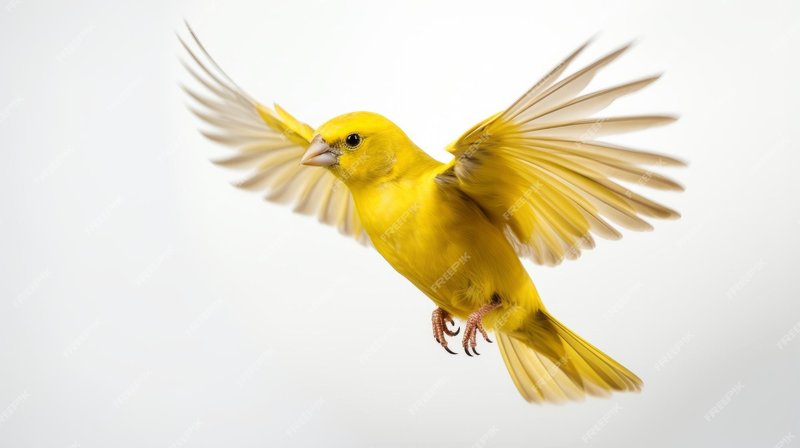
Understanding Canary Behavior
Canaries are known for their sweet songs and vibrant colors, but they also have unique behaviors. When considering letting your canary fly around the room, it’s crucial to understand their natural instincts. Birds are inclined to explore, forage, and play. In the wild, canaries would spend their days hopping around trees, singing, and interacting with other birds. As their owner, you want to provide a similar experience in a safe environment.
One of the joys of having a canary is watching them express their personalities. Some canaries may confidently zoom around the room, while others might prefer to perch and observe. To help them feel comfortable and confident, it’s a good idea to allow them to stretch their wings while staying close to you. Being present can reassure them during their flying adventures.
Benefits of Letting Your Canary Fly
Letting your canary fly around can be incredibly enriching for them. Birds need physical exercise to stay healthy. Allowing your canary to fly helps them build strong muscles and maintain a healthy weight. Think of it as you enjoying a jog or a bike ride—it keeps you fit and energized!
Plus, flying can stimulate their minds. Canaries are intelligent creatures, and when you give them the opportunity to explore, you’re encouraging natural behaviors. They might discover new perching spots, play with toys in different areas, or engage with you in fun ways. Watching your canary enjoy this freedom is rewarding for both of you.
Creating a Safe Environment
Before you let your canary take flight, safety is key. Your home needs to be a safe haven for your bird. Here are some essential steps to ensure a secure environment:
- Remove Hazards: Take a look around your room. Are there any open windows, ceiling fans, or small objects that could pose a danger? Make sure all potential threats are out of reach.
- Cage Placement: Place your canary’s cage in a room where they will have space to fly but also areas where they can retreat if they feel scared.
- Cover Mirrors and Windows: Birds often don’t see glass well and may try to fly through it. Consider covering mirrors or windows temporarily while your canary is flying.
- Organize the Space: Clear the area of clutter. This minimizes the chances of your canary colliding with objects.
Letting your canary fly is exciting, and making these adjustments will help you feel more confident and ready for their adventure.
How to Introduce Flight Time
Introducing your canary to flight time requires a gentle approach. Start by letting them out for short periods. Gradually increase the amount of time as they become accustomed to their surroundings. Here’s how to go about it:
1. Start Small: Open the cage door and let them explore their immediate area for about 5–10 minutes. Watch how they react. Are they curious or timid?
2. Monitor Their Behavior: Keep an eye on your canary’s behavior. If they appear stressed or scared, coax them back to the cage with treats.
3. Create a Routine: Once your bird is comfortable, establish a routine. Perhaps let them fly at the same time each day, so they know what to expect.
4. Use Positive Reinforcement: Reward them with treats or toys when they return to their cage. This helps them associate flying with positive experiences.
The goal is to provide a balance of freedom and security, allowing your canary to feel confident while flying around the room.
Common Challenges and Solutions
While letting your canary fly is fulfilling, challenges might arise. Here are a few common problems and how to deal with them:
– Fear of Open Spaces: Some canaries may be hesitant to leave their cage initially. If this happens, be patient. Encourage them with gentle words or treats and slowly increase their flying time.
– Getting Lost: Birds can get confused, especially in larger spaces. If your canary flies to a part of the room where they can’t find their way back, gently guide them with your hand or a stick to help them return to familiar spots.
– Fear of Humans: Some canaries might be shy. Spend time sitting close to their cage, talking softly or playing their favorite music. Let them get used to you before expecting them to fly around without hesitation.
Each canary has its personality, so adjusting the flying experience to match their comfort level is essential.
Alternatives to Free Flight
If letting your canary fly around feels daunting or impractical, don’t worry! There are plenty of alternatives to ensure they stay active and happy:
- Cage Playtime: Invest in engaging toys and perches inside their cage. This way, they can still exercise and explore without the risks of open flight.
- Flight Harness: Consider using a bird flight harness. This lets you take them outside safely, giving them a taste of freedom while keeping them secure.
- Supervised Outdoor Time: You can create a safe outdoor enclosure where they can explore under your watchful eye or take them out in a bird-safe carrier.
Remember, there are many ways to keep your canary stimulated and happy without full freedom if it feels too risky.
In the end, letting a canary fly around the room can be a rewarding experience, full of joy and discovery. By understanding their behavior, creating a safe environment, and approaching flight time thoughtfully, you can ensure your canary enjoys their time outside the cage while staying protected. And honestly, there’s nothing quite like watching your little companion flutter about—it’s like having a tiny piece of nature in your living room. Just remember, every bird is different. Take the time to learn what works best for your canary, and enjoy the wonderful journey of pet ownership.

